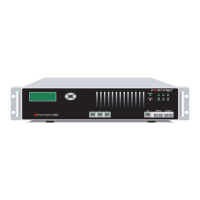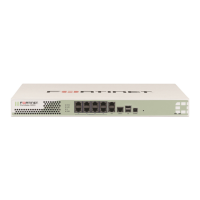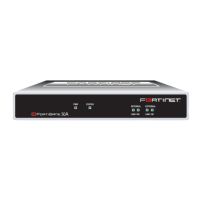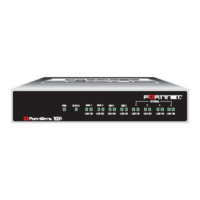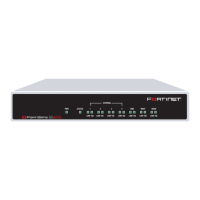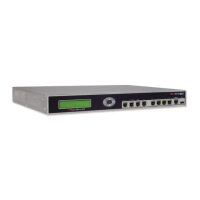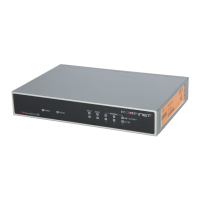FortiGate-3016B, FortiGate-3600A and FortiGate-3810A FortiOS 3.0 MR5 Install Guide
32 01-30005-0343-20071113
NAT/Route mode installation Configuring
For the most secure operation, you should change the configuration of the
external interface so that it does not respond to ping requests. Not responding to
ping requests makes it more difficult for a potential attacker to detect your
FortiGate unit from the Internet.
The default public interface is the Port 1 interface.
A FortiGate unit responds to ping requests if ping administrative access is enabled
for that interface.
To disable ping administrative access from the web-based manager
1 Log into the FortiGate web-based manager.
2 Go to System > Network > Interface.
3 Select Edit for Port 1.
4 Clear the Ping Administrative Access check box.
5 Select OK to save the changes.
To disable ping administrative access from the FortiGate CLI
1 Log into the FortiGate CLI.
2 Disable administrative access to the external interface. Enter:
config system interface
edit port1
unset allowaccess
end
NAT/Route mode installation
This section describes how to install and configure the FortiGate unit in
NAT/Route mode.
Preparing to configure the FortiGate unit in NAT/Route mode
Use Table 7 on page 33 to gather the information you need to customize
NAT/Route mode settings.
You can configure the FortiGate unit in using any of the following methods:
• The web-based manager GUI is a complete interface for configuring most
settings. See “Using the web-based manager” on page 34.
• The command line interface (CLI) is a complete text-based interface for
configuring all settings. See “Using the command line interface” on page 36.
• The front control buttons and LCD provide access to basic settings. See “Using
the front control buttons and LCD” on page 39.
The method you choose depends on the complexity of the configuration, access
and equipment, and the type of interface you are most comfortable using.
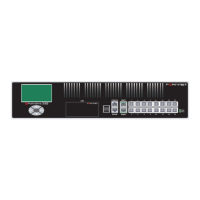
